Everton Under Sean Dyche Tactics
In this tactical analysis, we delve into Everton’s approach under the leadership of Sean Dyche, looking at their summer transfer window exploits and the tactics they have been using so far this term.
This team-focused scout report will provide an analysis of key areas such as the side’s pressing strategies, defensive organisation and transitions, offering a thorough analysis of Dyche’s influence on Everton’s performance.
Everton currently sit bottom of the Premier League table having failed to score a single point thus far and with a -9 goal difference after the first four matches.
They have faced difficult challenges against the likes of Brighton, Tottenham Hotspur, Bournemouth, and Aston Villa, but their next few fixtures offer some potential with slightly easier opposition on paper in Southampton, Leicester City, and Crystal Palace.
Everton Squad Quality
For a team that finished 15th in the 2023/2024 Premier League season, Everton have struggled to properly replace the key players they lost.
While the squad depth has increased, the quality of that depth is questionable.
Below is a look at the departures and arrivals before the season started.
Everton Transfer Departures
Everton have lost three key players this season, significantly impacting their overall quality.
Amadou Onana, their standout defensive midfielder, was a crucial presence in the middle of the park, offering both defensive solidity and ball progression.
He has moved to Aston Villa for a significant fee of €59.35m, leaving a gap in Everton’s midfield.
Ben Godfrey, a versatile centre-back who could also play as a full-back, was sold to Atalanta BC for €12m; his departure weakens their defensive options, particularly with his ability to cover multiple positions.
Lastly, Lewis Dobbin, a promising left winger, has also made a switch to Aston Villa for €11.8m, reducing Everton’s attacking depth on the flanks.
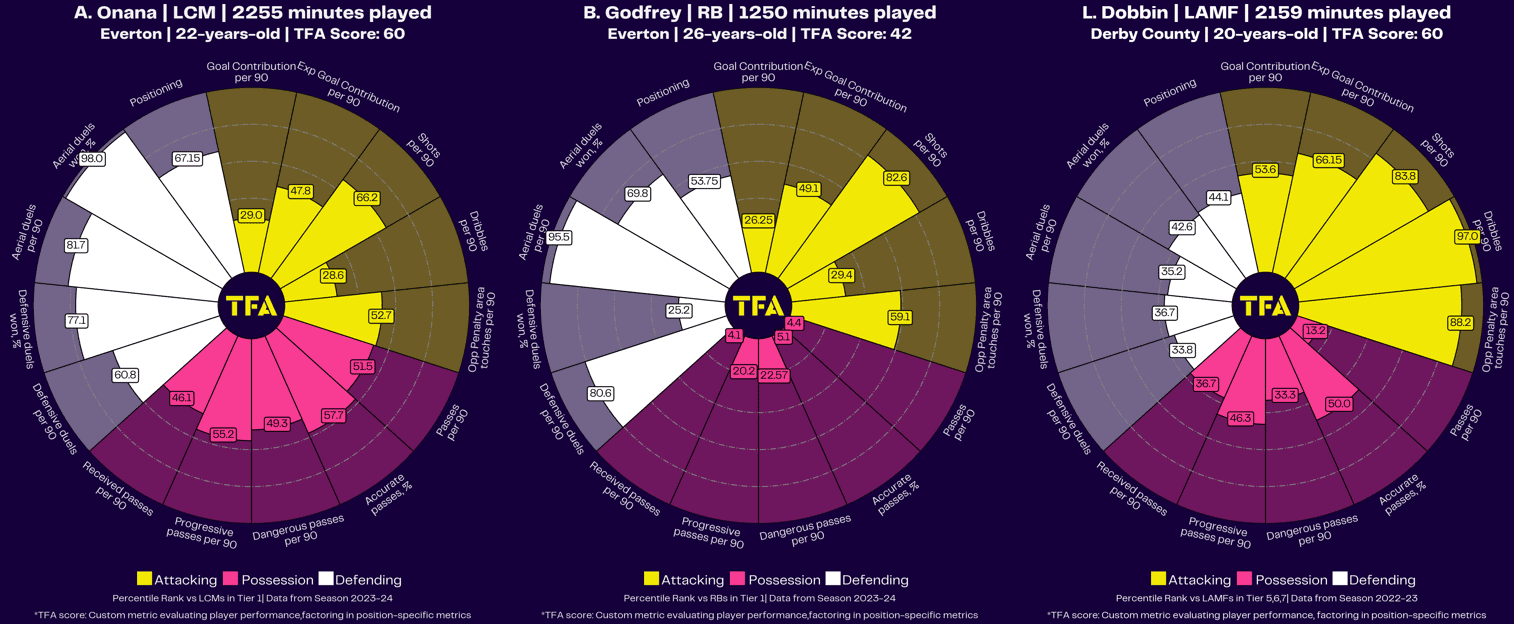
These departures put the club in a tough spot, and there is a clear need to strengthen the team and replace the important roles these players had.
Everton Transfer Arrivals
Jake O’Brien joined from Olympique Lyon for €19.5m, but he’s spent most of his career playing in lower leagues; in one season at Lyon, he managed 2,370 minutes, though that was just one season, so he isn’t that tried and tested.
Similarly, Iliman Ndiaye arrived from Marseille for €18m, but his top-flight experience is limited.
Before his move to Everton, he accumulated 1,625 minutes and registered eight goal contributions (goals/assists).
Tim Iroegbunam came in from Aston Villa for €10.7m, but his most significant playing time came on loan at QPR in the Championship during the 2022/2023 season, where he logged 2,284 minutes.
Since then, he hasn’t managed more than 400 minutes, casting doubt on his readiness to contribute meaningfully.
Armando Broja, meanwhile, is still trying to reignite his career after suffering an ACL injury in 2023.
His arrival on loan from Chelsea adds depth upfront, but it remains uncertain if he can return to his pre-injury form.
Jesper Lindstrøm, arriving on loan from Napoli for €2m, and Orel Mangala, on loan from Olympique Lyon, are the most experienced at the top level and offer some quality to Everton’s midfield.
However, the overall concern remains Everton’s recruitment strategy.
While the club has done well to add depth, with versatile players capable of covering multiple positions, the quality of these additions doesn’t significantly raise the team’s overall standard.
For a club that finished 15th last season, adding depth while improving the quality of the squad was always going to be a challenge.
Many of these players could have benefited from another season in top-flight football before making a move to a struggling Everton side.
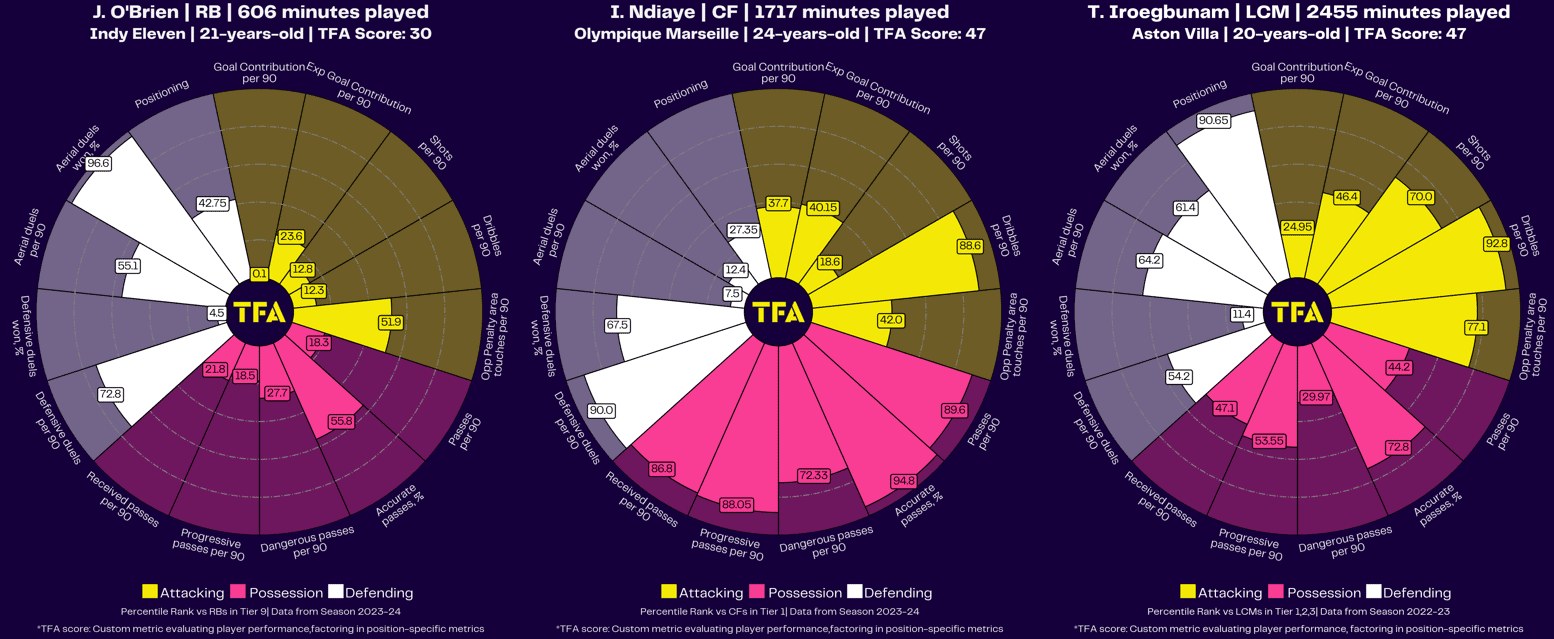
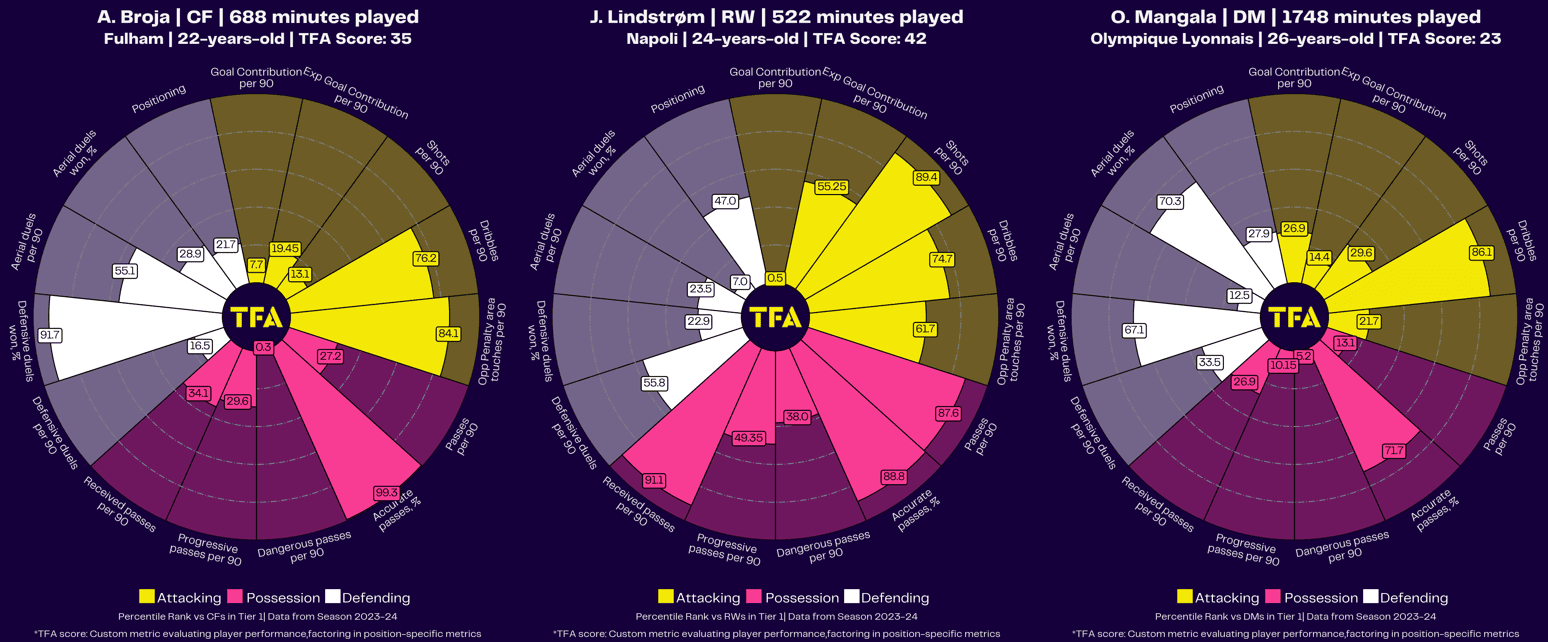
Everton Tactical Issues
Zonal Marking
One of the biggest issues in Everton’s game has been their zonal marking and box defending.
They’ve conceded five of their 13 goals from crosses or switches across the box.
Below, these five goals are highlighted to show how poor they’ve been in defending aerial opportunities inside their own box and the overall marking issues they face.
The loss of Amadou Onana has significantly contributed to this weakness.
He brought much-needed physicality and height to their defensive line, making a noticeable difference in aerial duels.
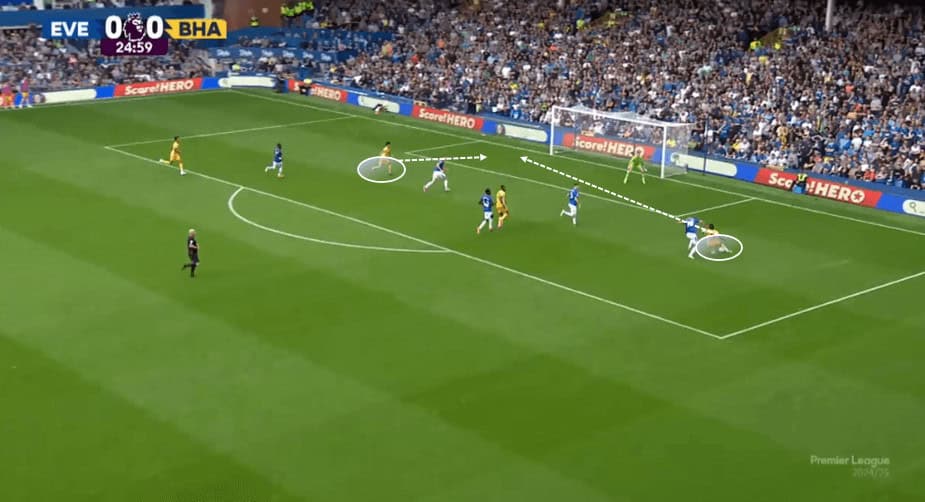
Brighton break the deadlock in the image below with a relatively simple goal.
A low ball across the box leaves the Everton defence in disarray as Mitoma makes a back-post run to tap the ball into the net easily.
The problem lies in how the ball bypasses three Everton players, leaving Mitoma completely unmarked just a yard away from the goal.
This showcases their poor box defending and lack of awareness in zonal marking.
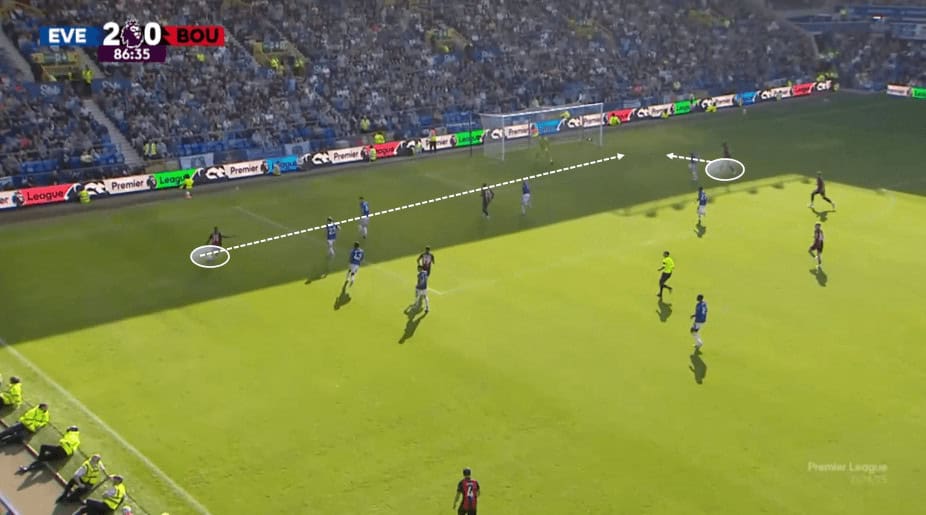
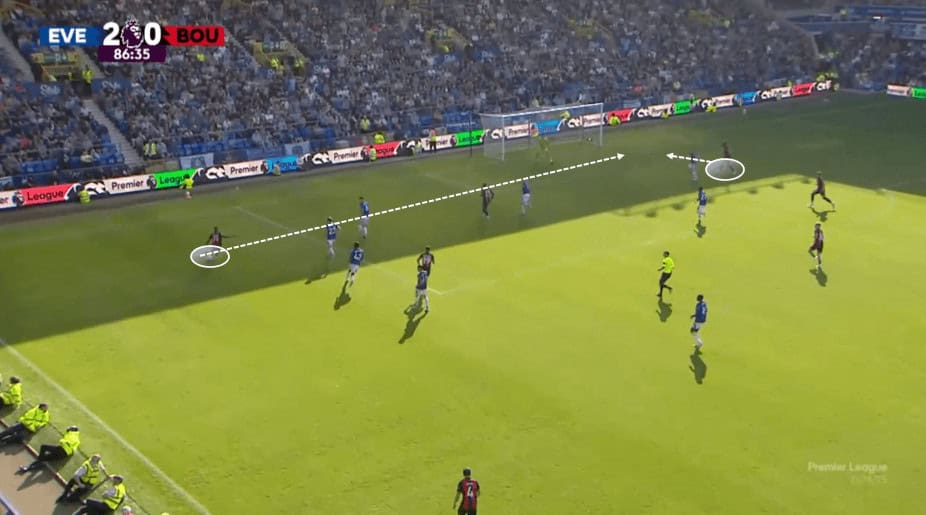
In the match against Bournemouth, which Everton lost 3-2, all three goals were conceded within just five minutes, largely due to dreadful zonal defending and a lack of defensive awareness.
The first goal above, which kicked off Bournemouth’s momentum, came from another simple cross to the back post, where the opposition player easily tapped it in, once again exposing Everton’s inability to defend their box well.
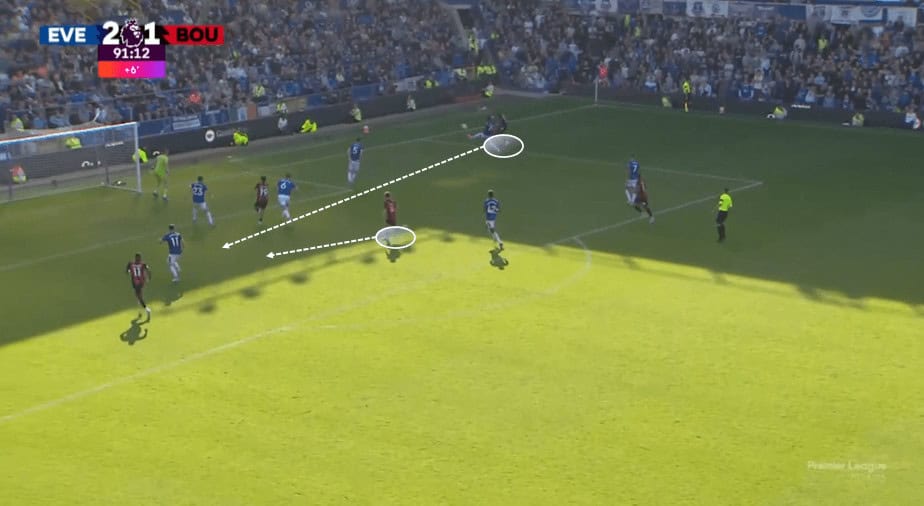
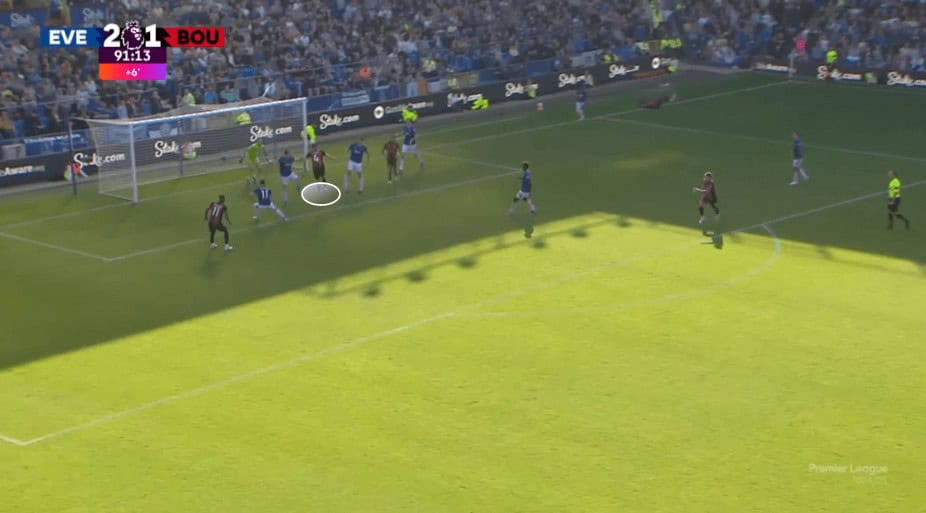
The second Bournemouth goal was almost an exact replica of the first.
A cross came in from the wide zone, and once again, Everton left a player unmarked, allowing them to slot the ball into the back of the net easily.
This goal further highlights Everton’s poor zonal marking and lack of defensive awareness, as they failed to learn from the previous mistake.
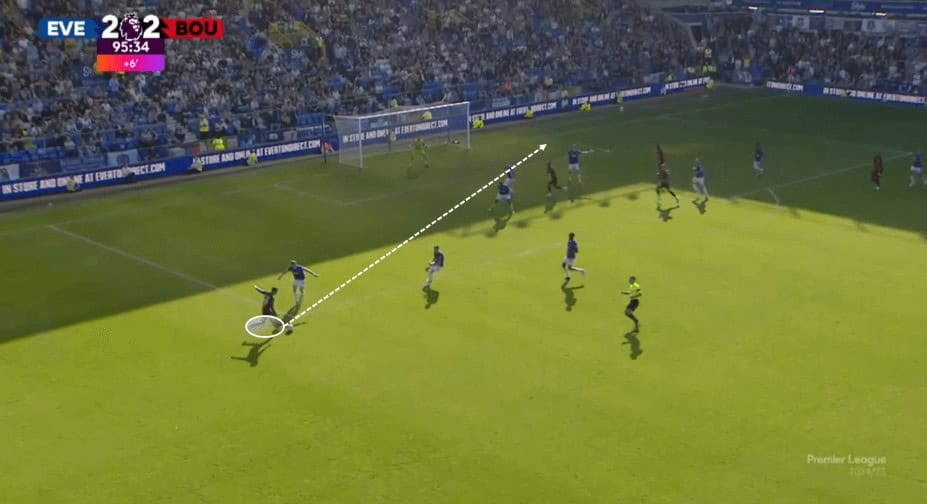
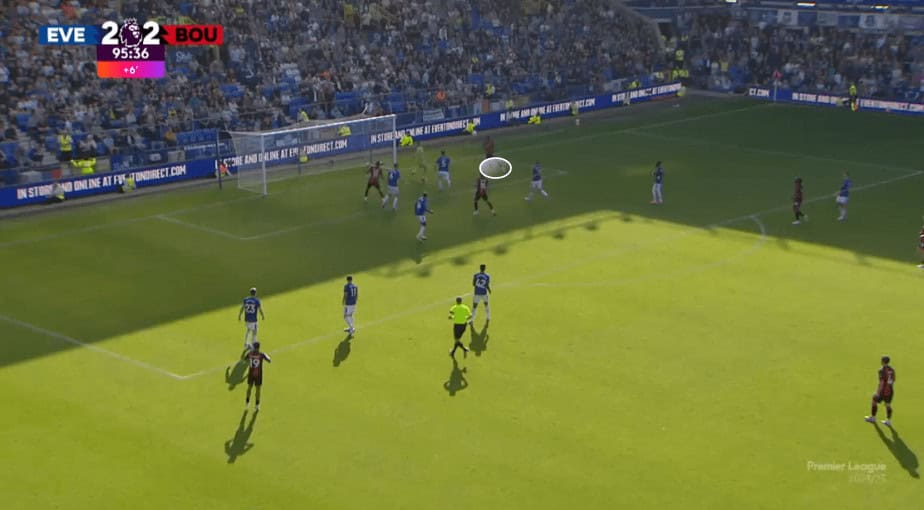
Once again, and for the third time in just five minutes, Everton conceded another goal from a cross, with a player left completely unmarked and no one picking him up.
These defensive mistakes in the final moments of the match ultimately cost Everton three crucial points, leaving them with nothing from a game where they could have walked away with a win.
This repeated failure in marking and awareness highlights a glaring issue in their defensive setup.
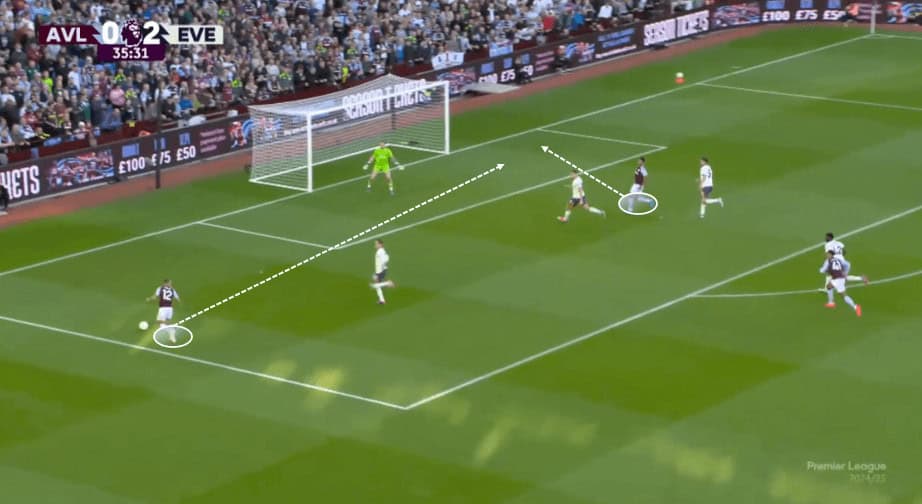
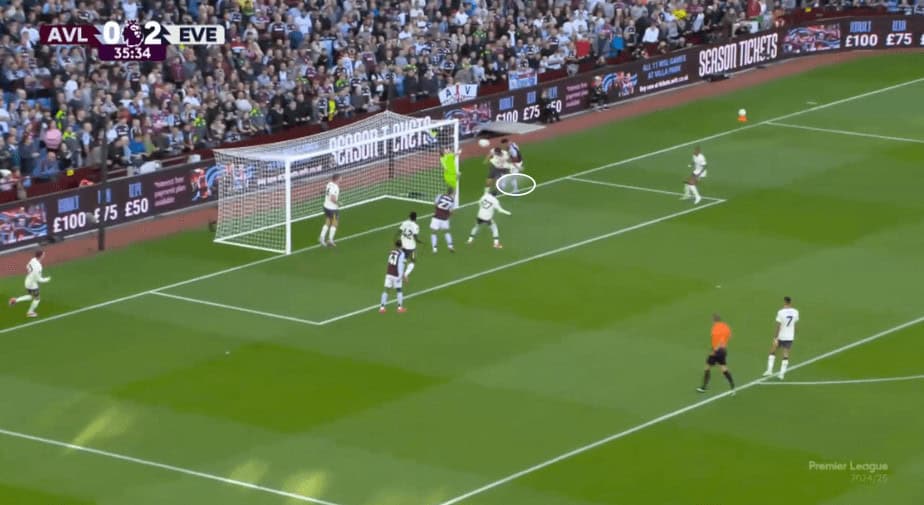
It’s alarming that this issue is still persisting, as seen in their recent match against Aston Villa.
While Watkins was at least marked this time, the failure to prevent him from getting to the ball highlights Everton’s continued struggles with aerial defending.
Despite some improvement in marking, their inability to effectively challenge in these situations is a recurring problem that needs urgent addressing.
Build-Up
Another issue with Everton is their inconsistent build-up play.
While they’ve never been known for having the best build-up over the years, their build-up patterns and quality has slowly gone downwards.
However, their current approach remains problematic.
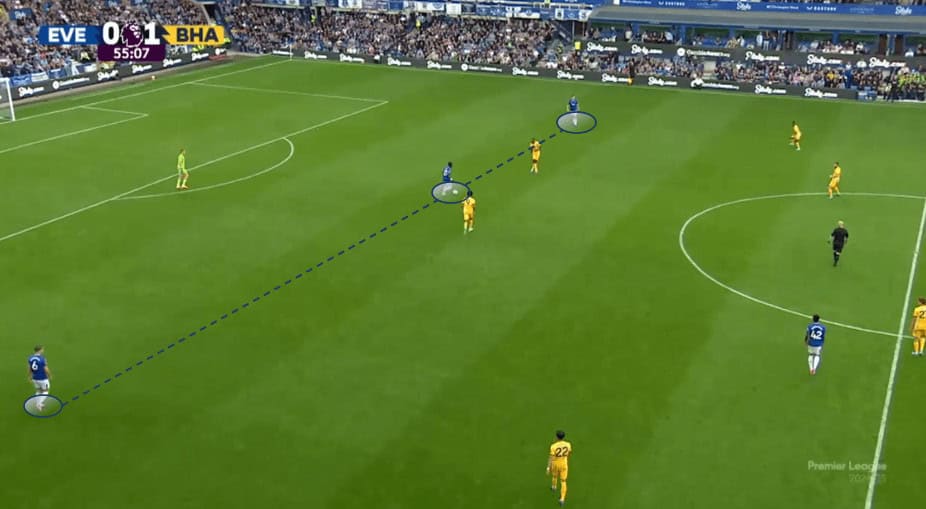
When playing out from the back, the centre-backs are positioned very wide, and Everton heavily rely on 34-year-old Idrissa Gueye as their deep-lying playmaker and the focal point of their build-up.
This approach feels outdated, with no supporting midfielders coming short to receive the ball and no wing-backs offering options.
It often comes down to simply giving their ‘number 6’ the ball and hoping something materialises, leaving their overall structure disjointed and ineffective.
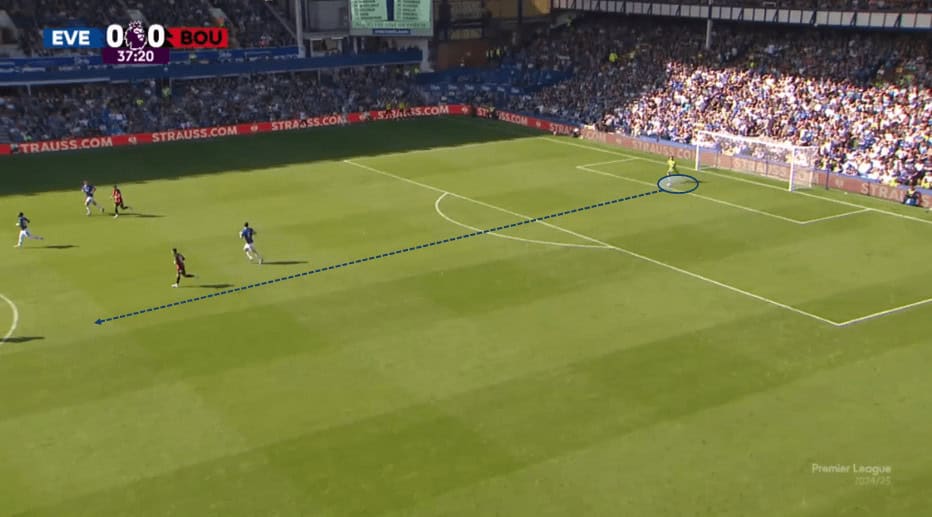
Another alternative build-up tactic Everton employ, especially when facing stronger opposition, is playing long balls and hoping to win the first or second ball to start their play from there.
However, the loss of Amadou Onana has made this approach far less effective than last season.
The 6’5″ midfielder was an essential outlet for winning aerial duels and helping transition the play from long balls.
Since his departure, this strategy has also become ineffective, as Everton no longer has a dominant presence in the air to support this approach.
Defensive Structure
Interestingly, Everton’s main defensive issues haven’t stemmed from their overall structure; they rarely concede from sitting back.
Instead, their problems arise during transitions, when they struggle to regroup and set up correctly.
This leaves them vulnerable to quick counterattacks and the opponent sending in crosses with their players not picking them up properly.
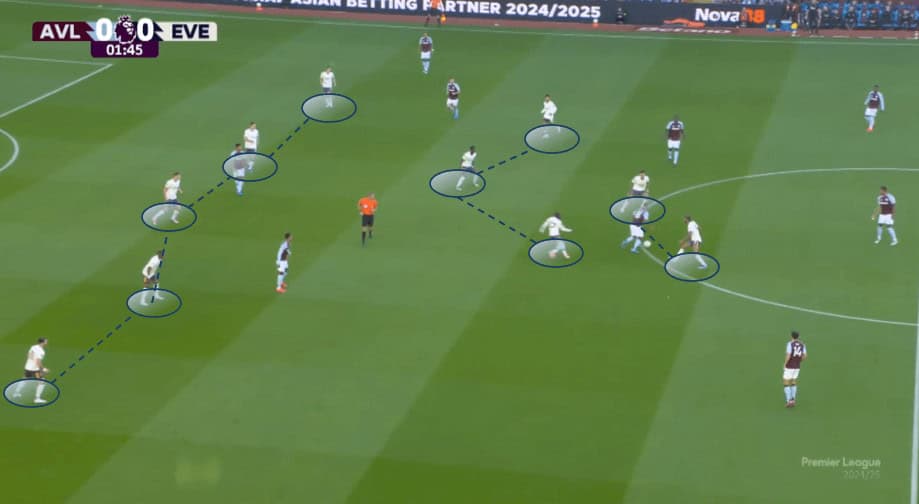
Everton often opt to defend in a low-block 5-3-2 formation, which is generally effective for teams of lower quality as it allows for more players behind the ball.
This setup provides defensive stability, with three players marking the central areas and two strikers pressing in the first line.
Conclusion
Overall, Everton have had a disastrous start to their 2024/25 Premier League campaign.
With zero points from their first four matches, things are looking bad for the Toffees.
The quality of their signings is still up for debate, and their early performances clearly show the loss of key players.
Their inability to defend crosses, combined with poor organisation during transitions, is costing them goals.
Things will have to change soon if they want to avoid a relegation battle this season.




Comments